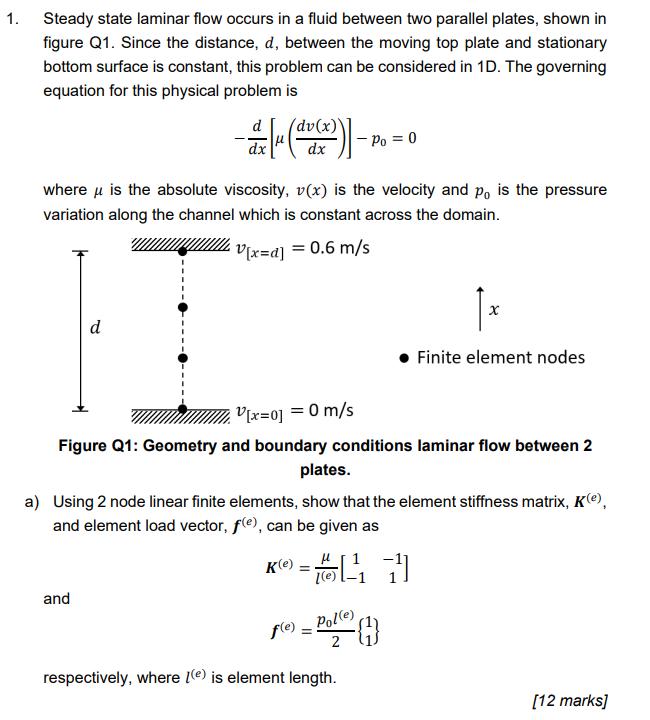Answered step by step
Verified Expert Solution
Question
1 Approved Answer
1. Steady state laminar flow occurs in a fluid between two parallel plates, shown in figure Q1. Since the distance, d, between the moving

1. Steady state laminar flow occurs in a fluid between two parallel plates, shown in figure Q1. Since the distance, d, between the moving top plate and stationary bottom surface is constant, this problem can be considered in 1D. The governing equation for this physical problem is - d[u(du(x)]- where is the absolute viscosity, v(x) is the velocity and po is the pressure variation along the channel which is constant across the domain. d - Po = 0 and V[x=d] = 0.6 m/s = V[x=0] = 0 m/s Figure Q1: Geometry and boundary conditions laminar flow between 2 plates. a) Using 2 node linear finite elements, show that the element stiffness matrix, K(e), and element load vector, f(e), can be given as Ke = 1 f(e) - Pol(e) = 2 respectively, where [(e) is element length. x Finite element nodes -0 [12 marks]
Step by Step Solution
★★★★★
3.45 Rating (161 Votes )
There are 3 Steps involved in it
Step: 1
12 2VKN dr u 2 2 dua VW 190 Boundary condition By the given method Ve 211 Gives de ...
Get Instant Access to Expert-Tailored Solutions
See step-by-step solutions with expert insights and AI powered tools for academic success
Step: 2

Step: 3

Ace Your Homework with AI
Get the answers you need in no time with our AI-driven, step-by-step assistance
Get Started


